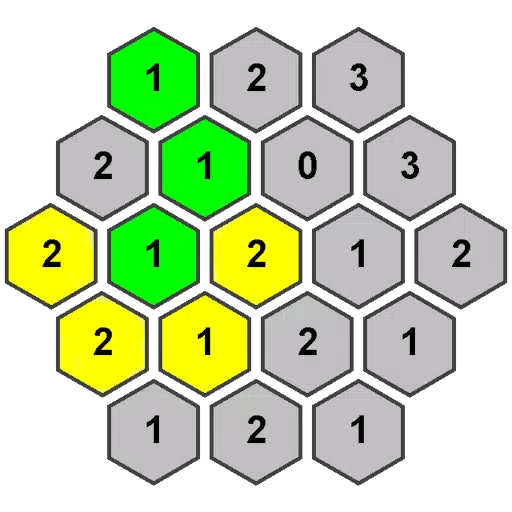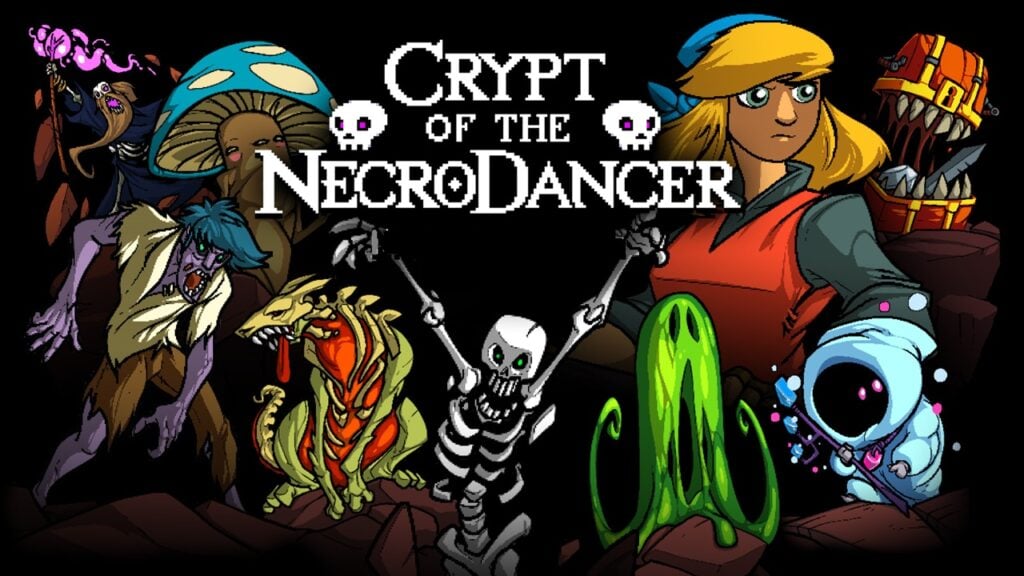Mere hours after first playing FBC: Firebreak, I found myself face-to-face with a delicious cream cake. Unfortunately, my clumsiness led to a dollop of cream landing directly into my blood orange cocktail, melting into it. As I watched the swirling mix, I was transported back into the eerie halls of the Federal Bureau of Control, firing bursts of liquid at the glowing red enemies that haunted its corridors. This sort of twisted leap of logic is what a visit to Remedy’s headquarters does to a brain.
Remedy, the studio behind Alan Wake and Max Payne, boasts an eclectic library of games ranging from horror to sci-fi and neo-noir detective fiction. What sets Remedy apart is its fearless embrace of silliness. Firebreak, their latest venture into first-person shooting and co-op multiplayer, is no exception. In a two-hour play session, I unleashed chaos with a murderous garden gnome and battled a towering sticky note behemoth. These quirky elements convinced me that Remedy can indeed carve a unique space in the often serious world of online shooters.
FBC: Firebreak - Gameplay Screenshots
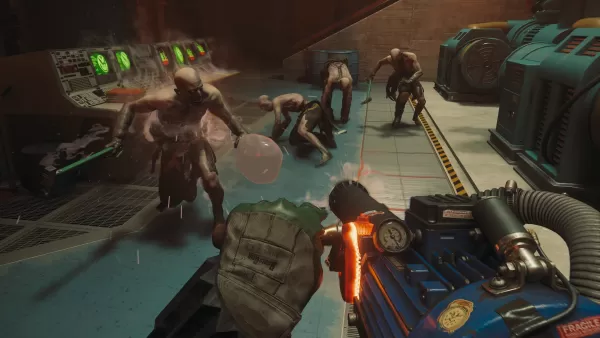
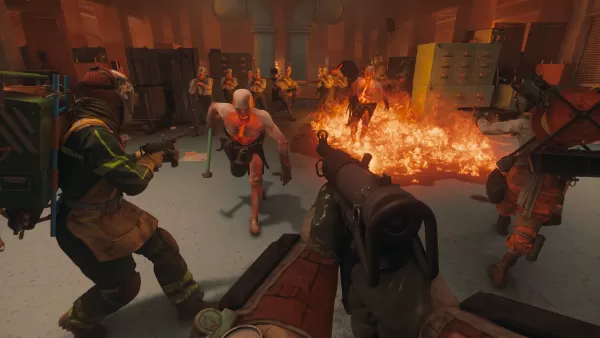 View 16 Images
View 16 Images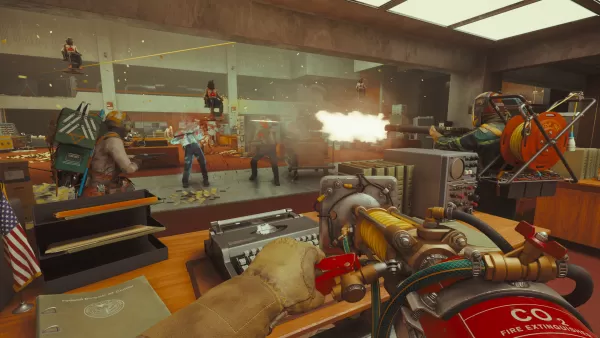
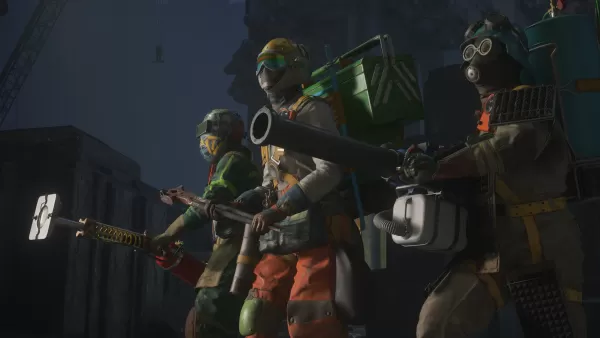

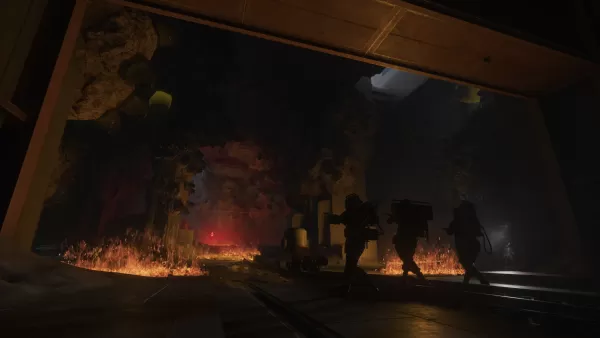 Set six years after the events of Remedy’s 2019 hit, Control, Firebreak revisits The Oldest House, a setting familiar to those who experienced Jesse Faden’s journey. The game retains both the broad strokes and subtle details of its predecessor, from the brutalist architecture to the Finnish folk music echoing through its bathrooms. Firebreak sends squads back into this X-Files-like government building to combat outbreaks of the Hiss, Control’s inter-dimensional threat that possesses both living and non-living entities. Players, alongside up to two teammates, act as this universe's Ghostbusters, armed with shotguns instead of proton packs. The twist? Crossing the streams is not only allowed but encouraged.
Set six years after the events of Remedy’s 2019 hit, Control, Firebreak revisits The Oldest House, a setting familiar to those who experienced Jesse Faden’s journey. The game retains both the broad strokes and subtle details of its predecessor, from the brutalist architecture to the Finnish folk music echoing through its bathrooms. Firebreak sends squads back into this X-Files-like government building to combat outbreaks of the Hiss, Control’s inter-dimensional threat that possesses both living and non-living entities. Players, alongside up to two teammates, act as this universe's Ghostbusters, armed with shotguns instead of proton packs. The twist? Crossing the streams is not only allowed but encouraged.
Let me explain. Beyond the standard arsenal of pistols and rifles, players can choose from three different “kits,” essentially Firebreak’s classes, each designed to support the team in unique ways. The Fix Kit lets you repair machines like ammo stations and healing showers (yes, FBC employees restore HP by getting drenched). The Splash Kit equips you with a hydro cannon that can heal teammates and douse enemies in water. Lastly, the Jump Kit comes with a short-range Electro-Kinetic Charge Impactor that shocks and immobilizes foes. When combined, these kits unleash devastating effects—imagine the power of sending a high-voltage bolt into a soaked enemy.
While Firebreak is playable solo, it’s clear that teamwork and communication are key. All missions, known as “jobs,” follow a simple structure: enter, complete objectives, and return to the elevator. My first task was straightforward: my team had to repair three faulty heat fans in the building’s furnace while fending off enemy waves before retreating to safety.
Things can get hectic, however. The mission “Paper Chase” involved destroying thousands of scattered sticky notes, a far cry from our initial fan maintenance job. We could only exit the area once we met our target number of notes, but waves of Hiss and the notes themselves, which could attach and damage us, added complexity. The phrase “death by a thousand paper cuts” was never more fitting. While simple melee attacks could destroy the notes, using the elemental kits to soak and spark them was far more efficient, showcasing Firebreak’s clever multiplayer synergy. The solid gunplay ensured that there was always something to do, even without relying on teammates. I found myself drawn to the machine gun, relishing the satisfaction of mowing down the glowing red ghouls that burst into an oily haze reminiscent of Control.
The third mission in The Oldest House’s Black Rock Quarry demanded the most teamwork. We had to shoot squelchy leeches from the cavernous walls to collect lethal radioactive pearls, which needed to be contained and moved along a track deeper into the quarry. This challenging mission underscored the importance of communication, with the need for regular showers to rinse off radiation, enemy droves, and instakill astral spikes complicating our progress. Despite the chaos, I had a blast.While I’m satisfied with the mission objectives, Firebreak’s map design leaves me ambivalent. In Control, The Oldest House was a labyrinth of shifting corridors and secrets, but Firebreak’s maps are less complex. This might be beneficial for navigating in first-person, though the absence of a minimap occasionally led to confusion. However, the Federal Bureau of Control’s headquarters has lost some of its unpredictable charm. Don’t expect wonders like the Ashtray Maze; instead, you’ll find more straightforward, grounded environments.
These missions might seem simple, but completing them unlocks higher clearance levels, adding more objectives and extending playtime. Subsequent visits open up new chambers and introduce more complex objectives and enemies. Just like in Control, bosses lock down certain areas, ranging from bullet sponges to intriguing beasts like the giant sticky note monster that pummeled my team with its yellow fists. This latter encounter was particularly thrilling, requiring communication and teamwork akin to the final stretches of some Space Marine 2 expeditions, where brute force must sometimes give way to strategic thinking.
AnswerSee ResultsThese monsters made from everyday objects are some of my favorite elements from Control, and I’m thrilled to see that weirdness carried over. This theme is further explored through randomly spawning corrupted items, which I didn’t encounter during my playtime but hold great promise. One item mentioned was a rubber duck that could redirect enemies away from the team, though its small size made it easy to miss. The developers assured us they’re working on improving readability before launch. Another intriguing item was a large set of traffic lights; being caught in its red gaze could result in heavy damage, adding a dash of Squid Game color to the otherwise grey brutalist setting.Firebreak’s strong foundation is somewhat marred by readability concerns. Remedy’s unique flourishes give the game a chance to stand out, explored further through loadouts. Completing missions grants unlock tokens for zany new tools, including ultimate abilities like the Splash Kit’s Teapot, which burns enemies with superheated globules, and the Jump Kit’s erratic garden gnome, which summons an electrical storm. These abilities often lead to chaotic but fun gameplay, though the screen can become overwhelming, making tactical play challenging. The Firebreak developers are aware of these issues and plan to improve the game’s readability before its June 17 launch.
Firebreak will launch with five jobs, with two more promised by the end of 2025. Game director Mike Kayatta describes these as “more like game modes” than missions, offering replayability and depth through multiple clearance levels and evolving objectives. Priced at $39.99 / €39.99 / £32.99 and available on Game Pass and PlayStation Plus, Firebreak offers solid value for both Control veterans and newcomers looking for a fun shooter.Navigating the always-online co-op shooter landscape is challenging, but after playing Firebreak, I’m confident in its strong foundation. Combined with Remedy’s quirky personality, Firebreak has the potential to carve its own niche. Much like that dollop of cream found its place in my cocktail, which I still enjoyed to the last drop.
 Home
Home  Navigation
Navigation






 Latest Articles
Latest Articles

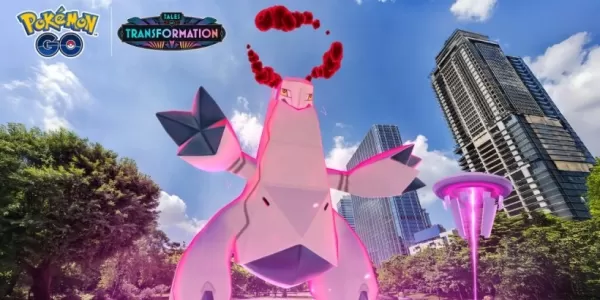








 Latest Games
Latest Games









